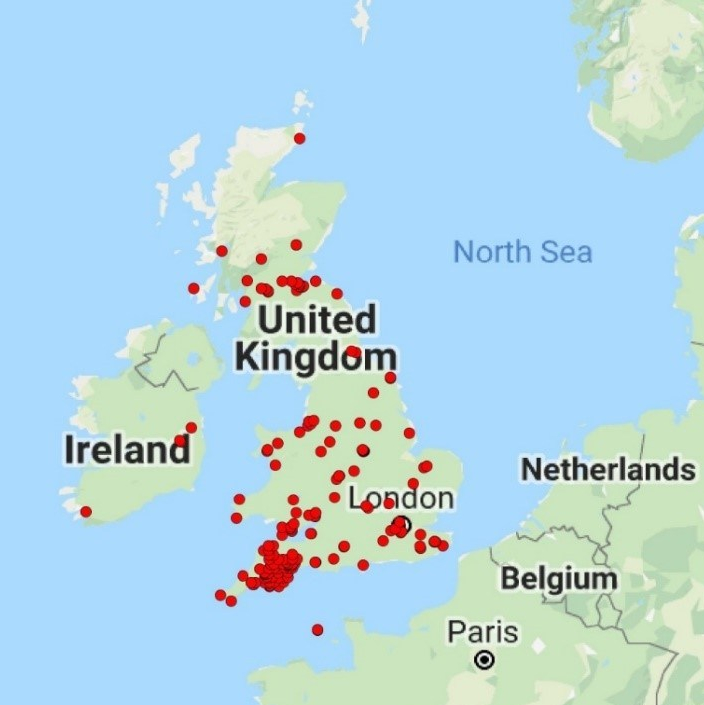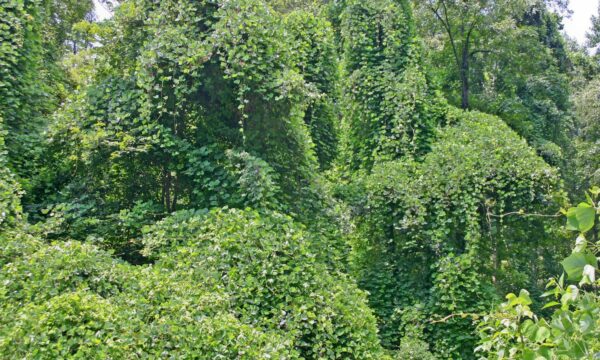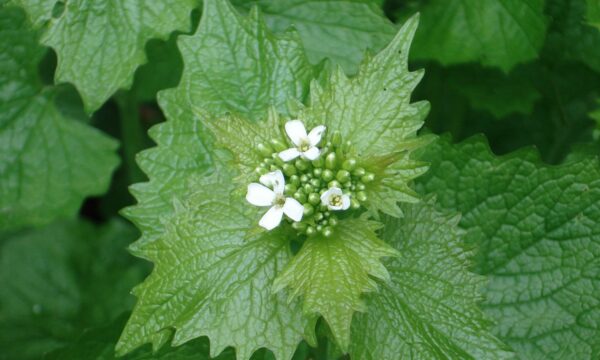By Dr Jenna Ross
Guest writer, Dr Jenna Ross, from Crop Health and Protection (CHAP), joins us for the second of her two-part special series (read part 1) on the outputs of her prestigious Nuffield Farming Scholarship. Jenna spent 26 weeks travelling the world studying all aspects of slug invasions and slug control, and in this article discuss the impact of slug invasions on UK biosecurity.
Molluscs (slugs and snails) are a significant risk to biosecurity worldwide due to their:

Figure 1: Dr Jenna Ross
- Varied diet, thus can be herbivores, predators, scavengers or omnivores;
- Ability to carry parasites and pathogens, including some that impact on human and animal health;
- Survival in disturbed environments, especially when they are in close association with human activity;
- Rapid reproduction, laying hundreds of eggs over a short period of time;
- Reproduction strategy, in that they can self-fertilise, thus having the ability to survive without a mate, and establish a population with a single invader; and
- Ability to aestivate and emerge when weather conditions are more favourable.
The economic risks of molluscs can be broken down into:
- Direct Risks: Impact of molluscs themselves, through feeding damage (Fig. 2-6), blocking machinery and contamination of crops from mollusc faeces and mucus; and
- Indirect Risks: Impact on downstream consequences, including transmission of parasites and pathogens, rejection of exports due to contamination of produce, and impact of mollusc control strategies on soil health, such as tillage and burning.
- Figure 2: Slug damage in South African canola crop (Source: Geoff Tribe)
- Figure 3: Wheat damage caused by slugs near Melbourne, Australia (Source: Jenna Ross)
- Figure 4: Slug damage in corn in Canada (Source: Blake Vince)
- Figure 5: Slug damage in Kale in Kenya (Source: Solveig Haukeland)
- Figure 6: Slug damage to truffle in Manjimup, WA, Australia (Source: Jenna Ross)
In the UK mollusc invasions are a particular risk due to the country’s mild damp climate. But is there anything we can do to mitigate this risk?
In order to understand more about mollusc invasions, I went to visit Dr David Robinson, from the United States Department of Agriculture (USDA), Animal and Plant Health Inspection Service (APHIS) in Philadelphia, who is a member of the Plant Protection and Quarantine (PPQ) team. Dr Robinson’s role is to eradicate or control mollusc invasions in the US, in order to protect agriculture and natural resources. Dr Robinson is responsible for training port identifiers in malacology (the study of molluscs) at 27 inspection stations, including ports and airports. The US has strict regulations in place to prevent the movement of molluscs, even between states, and they are particularly protective over Florida and California, due to the production of high value crops.
One area I was especially keen to learn more about was the principal pathways for mollusc invasions into the US. According to Dr Robinson, one of the key principal pathways is shipping containers, but not via the contents, but on the exterior of the containers. In fact, 95% of mollusc interceptions in the US are from the exterior of containers, with snails surviving up to 12 months. Other pathways included cut flowers, plant material, fresh vegetables, tiles, quarry products and intentional introductions. Intentional introductions included passengers carrying specimens of the Giant African Snail from Hawaii back to mainland US with the aim of keeping them as pets. Other common intentional pathways include the use of molluscs as a food source, scientific research and religious purposes (we will come back to the latter later!).
Biosecurity planning to detect an incursion is vital to minimise the risk of mollusc invasions. In the US, the biosecurity protocol for mollusc interceptions involves:
- Preliminary identification and imaging of mollusc specimens;
- Dissection of molluscs and imaging of their reproduction system;
- Review of data by national specialist who then makes a recommendation to the port, however, the final decision lies with the port. They can either treat with metaldehyde, cold treatment, methyl bromide, or, not treat, whereby the container is returned it its port of origin or incinerated if it contains perishable goods.
The above process can be achieved in as little as 15 minutes.
One of the key take home messages from my trip to the USDA is the importance of protecting biosecurity. In part one, I mentioned that over 50% of slug species currently present in the UK are exotic, with Dr Ben Rowson, from the National Museum Wales, confirming several new introductions in recent years. So, what can the UK do to prevent future introductions? Dr Robinson suggests using the US strategy mentioned above as a basic backbone and building on this using the following recommendations:
- Identify malacology specialists that are active in the UK;
- Develop a centralised inspection system;
- Develop a legal framework to allow commodities to be held for enough analysis time;
- Set up digital imaging and molecular analysis protocols;
- Research and development into novel methods for mollusc identification;
- Develop a system that allows hold, action and control at UK ports; and
- Collaboration between government departments, as well as government to government.
However, what happens when a mollusc invasion filters through the cracks? Is it possible to get these invasions under control? The US provides a fantastic success story for this, whereby they have almost completely eradicated the invasive Giant African Snail, Lissachatina fulica, from Florida.

Figure 7: Giant African Snail, Lissachatina fulica (Source: Suzete Gomes)
The Giant African Snail was introduced to Florida in 1966 by a young boy carrying live snails in his baggage after being on holiday in Hawaii. A programme set up by the USDA and Florida Department of Agriculture and Consumer Services (FDACS), collected and destroyed approximately 18,000 snails, and by 1973, the state had successfully eradicated the snail. This eradication programme costed approximately $1 million. However, in 2009, a young girl from Florida was taken to hospital after showing signs of eosinophilic meningoencephalitis, also known as the “Rat lungworm disease”. It was discovered, following a USDA interview with the parents, that the family were part of a religious group that took part in a religious ritual, whereby the apex of live Giant African Snails was broken, and bodily fluids were consumed. On this revelation, all snails were confiscated from the group, and a search of the immediate surroundings was conducted. However, in September 2011, the USDA confirmed the presence of the Giant African Snail in Miami, close to the initial site. In response, surveys were immediately conducted throughout southern Florida, and the USDA provided funding to help eradicate this pest. Specially trained sniffer dogs were brought in to assist the project, and a community outreach programme was set up, and included TV, radio, newspapers and a school outreach campaign.
A Giant African Land Snail Junior Detective scheme was set up in the Miami-Dade County. The aim was to get 5th grader children to join as Junior Detectives, and along with their parents, take part in reporting sightings of the snail, in exchange for their ‘Sheriffs’ badge. As of 1st June 2018, over 168,300 snails, from 719 sites, have been collected and destroyed. The USDA is aiming for complete eradication within the next 2-3 years.

Figure 8: NBN Atlas of Arion vulgaris in the UK
Dr Robinson suggests that perhaps a similar approach could be considered for the Spanish slug, Arion vulgaris, now that it has become significantly widespread in the UK (Fig. 8)?
Dr Robinson suggests the following recommendations regarding A. vulgaris in the UK:
- Establish an vulgaris task force;
- Train specialist sniffer dogs to identify vulgaris;
- Increase public awareness (e.g. TV, radio, newspaper articles and billboards);
- Setup citizen scientist campaigns and community outreach programmes, such as the Giant African Snail Junior Detective scheme successfully used in Florida;
- Work with the Agricultural and Horticultural Development Board (AHDB) to better inform farmers; and
- Work with the Royal Horticultural Society (RHS) to better inform gardeners.
In conclusion, molluscs are a significant biosecurity threat to the UK, with several key species identified as high risk in part one of this blog series. Not only do molluscs have a direct impact regarding crop damage, they also have an indirect impact on human and animal health, rejection of exports and soil health (via mollusc control strategies). With global warming, it is likely that the UK will continue to get warmer and wetter, making it the perfect environment for a whole host of new invasive mollusc species. I think it is time we sit up and start considering some of the recommendations detailed in this article in order to protect UK biosecurity from these slimy creatures.
About the author
Dr Jenna Ross’ enthusiasm for slugs started at a young age on her family farm in Aberdeenshire. Her passion for the subject continued during her PhD studies, which focused on improving production efficiency of BASF’s Nemaslug product, as well as developing new international retail markets. On completion of her PhD, she worked as a project manager for BASF as part of the Knowledge Transfer Partnership scheme, and then went on to work with Bioforsk (NIBIO) in Norway, looking at the impact of the Spanish slug. Jenna spent a year’s secondment at the International Institute of Tropical Agriculture in Tanzania, and also establish her own research group, linking innovation and industry, to find a bio-solution to slug pests in South Africa. Jenna recently completed an MBA with Distinction from Robert Gordon University (RGU), with a focus on developing a business plan for her bio-molluscicide ideas. Her academic achievements at RGU, led to a series of awards and accolades, including being selected as one of the top five MBA graduates in the world. In 2018, Jenna was selected as the Royal Highland & Agricultural Society of Scotland and the Agricultural & Horticultural Development Board’s Nuffield Farming Scholar. As part of her scholarship, Jenna spent 26 weeks travelling to the US, Canada, Brazil, UK, France, Netherlands, Belgium, Czech Republic, Ukraine, Spain, Norway, Finland, Japan, Kenya, South Africa, Australia and New Zealand, in a quest to find a solution to slug pests, as well as understand their invasive nature. Since returning from her Nuffield adventures, Jenna has taken up a position at Crop Health and Protection, with the aim of spinning out some of her ideas into real world solutions, as well as highlighting keys areas regarding biological invasions and biosecurity.
2 Comments
Leave a Reply
Related News & Blogs
5 invasive species to look out for in the US
The presence of invasive species poses a significant hazard to many native environments and species found in the United States (US). They lead to significant expenses in agriculture, forestry, and recreation. Once out of control, they can destroy entir…
26 February 2024










[…] Dr Jenna Ross, from Crop Health and Protection (CHAP), joins us for a two-part special series (read part 2) on the outputs of her prestigious Nuffield Farming Scholarship, where she spent 26 weeks […]
[…] Dr Jenna Ross, from Crop Health and Protection (CHAP), joins us for a two-part special series (read part 2) on the outputs of her prestigious Nuffield Farming Scholarship, where she spent 26 weeks […]